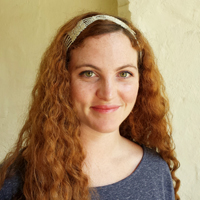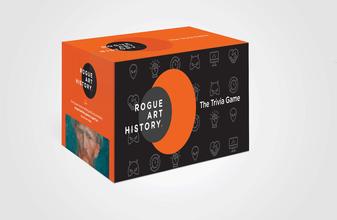More about Dante Gabriel Rossetti
- All
- Info
- Shop
Works by Dante Gabriel Rossetti

Sr. Contributor
When you're part of an absurdly talented family it can be difficult to stand out, as experienced by Dante Gabriel Rossetti.
I mean, who amongst us can choose the best Brontë (Charlotte), Barrymore (Lionel), or Kennedy (Jackie… duh). I’d sooner pick a favorite star in the heavens! Yet, through his ability to excel in both art and poetry, Dante Gabriel Rossetti managed to be the most recognizable name amongst a family that produced respected poets, critics, authors, and art theorists.
Born in London in 1828, Rossetti was hard-wired with red-hot literary talent; some generations before he was born his family, the Della Guardia’s, were given the nickname “Rossetti” because so many of them had flaming red hair. His father Gabriel was a successful Italian poet and Dante Alighieri scholar whose patriotic verses were made suddenly scandalous when the Neapolitan Constitution was revoked. As a result Gabriel was exiled, eventually making his way to London where he wrote poetry, taught Italian at King’s College, and sired some of the greatest known Victorian writers.
Full disclosure, as for poetry I’d much rather read Christina Rossetti than her brother. She snuck feminist themes into the minds of prudish Victorians before feminism officially existed and she did it amidst some of the biggest English poets of all time (Tennyson, Swinburne, and her brother to name a few). Read Goblin Market and try not to get chills. She also acted as a model for her brother and they worked collaboratively on illustrations for her publications. Rossetti’s other sister, Maria Francesca Rossetti followed in her father’s footsteps and wrote scholarly works on Dante Alighieri. She also had a crush on John Ruskin, art critic extraordinaire who loved her brother’s work and would become patron to Elizabeth Siddal, Rossetti’s wife.
Then there was his brother Michael. He was a critic, writer, and along with Rossetti and a few others (namely Millais and Hunt) helped to form the influential Pre-Raphaelite Brotherhood in 1848. The PRB was similar to your PBR loving hipster friend in that they hated the accepted art style (i.e. the Royal Academy of Art and its founder Sir “Sloshua” Reynolds) and just loved upcycling vintage paintings (i.e. mimicking the Classical compositions and techniques of Raphael and Michelangelo). The PRB was weirdly into everything Medieval so a ton of their works depict Medieval and Arthurian lore. Despite the group’s popularity it disbanded around 1853 with the artists involved more or less following its doctrines throughout their careers. The style directly influenced the Symbolist movement that followed (think Waterhouse and water nymphs) and purportedly helped inspire The Lord of the Rings.
Though generally well received, Rossetti couldn’t deal with criticism or fame and after his first two major exhibitions began to focus more on commissions, private sales, and poetry. He would often paint pictures inspired by his poetry and write poems inspired by his paintings in what is referred to as a “double work.” Where did he get the inspiration for such a wealth of artistic expression? From beautiful women of course!
Some of his most important muses include:
-
Fanny Cornforth Born Sarah Cox, Fanny was a working class beauty who loved Rossetti unconditionally but was considered below his station. Michael Rossetti said she was beautiful but, “Had no charm of breeding, education, or intellect.” When Rossetti's wife died in 1862 Fanny moved to a nearby apartment in Chelsea to serve as his housekeeper, lover, and model. It sounds like a decent gig but consider the hurt involved in practically living with a man who is rampantly banging other women while cleaning up after his addicted artistic whims and pet wombats, llamas, and toucans. For some reason he loved wombats, and apparently hated owls? One anecdote describes him “rattling his stick between the cage bars furiously” at the zoo owls. Oh, and he made his toucan wear a hat and ride the llama, which is, I’m sorry PETA, awesome. Perhaps it was this love of zoo animals that caused Rossetti to call Fanny his “Elephant” and her his “Rhino.” Nah, it was just that they both got fat as they aged.
When Rossetti died he left a bunch of paintings to Fanny intending her to sell them saying, “You are the only person whom it is my duty to provide for, and you may be sure I should do my utmost as long as there was a breath in my body or a penny in my purse.” She later married, but when her husband died the money ran out. Fanny took comfort in the home of her evil sister-in-law Rosa Villiers who forced the now senile Fanny into a workhouse and then into an asylum. Here her physical and mental state began to decline, she became violent, refused treatment and eventually died of bronchitis at the age of 74.
-
Elizabeth Siddal - After a 10 year long affair Rossetti finally married Elizabeth in 1860. She was a sickly, slender (supposedly anorexic), elegant, and quiet beauty. Renowned for her looks she was actually chosen to pose for her most famous picture (you may have heard of Millais’ Ophelia) because she was plain and therefore considered expressive. Elizabeth was kind and talented; she painted and wrote exclusively for John Ruskin who paid her £150 per annum for everything she made. She suffered deep emotional pain caused by the knowledge that her husband’s family didn’t really like her and he was a dirty cheater. This pain was deepened by her addiction to laudanum and the miscarriage of a daughter in 1861. Georgiana Burns wrote that during a visit Elizabeth was found on the floor near a cradle saying “Hush, Ned, you’ll waken it!” adding, “How often it seemed to us that if the little baby had lived she, too, might have done so, and Gabriel’s terrible melancholy would never have mastered him.” Elizabeth died a year later of an overdose. In wild despair, Rossetti buried his journal of poetry with her body. Sound romantic? Think again. In 1869, Rossetti exhumed her body in order to retrieve the poems to add to his new publication. Classy bro. Legend has it that her gorgeous red locks had continued to grow so when the coffin was opened the gravediggers were met with a tangle of coppery strands that they had to dig through to find the book.
-
Jane Morris - Wife of William Morris, the dude with the most bitchin wallpaper of all time. He founded a design firm that is still beloved where Rossetti created stained glass before going off to bang Jane. Henry James described Jane as “guiltless of hoops” meaning she went commando to show off her curves… or to avoid worsening her chronic back pain, whatever. Rossetti moved to the country to be near Jane but grew steadily more anxious. Believing that he was being haunted by Elizabeth’s ghost he began taking chloral to help him sleep. He drank a ton of whisky to wash down the bitter chloral and as a result became addicted to both substances. By 1871 when a pseudonymous review called him “fleshly all over” suggesting his work was nothing but lusty smut Rossetti was pretty friggen crazy. After a public written war with the author of the review Rossetti attempted suicide. A few years later Morris decided to fire Rossetti (I wonder why?) and as a result he moved away from the country and back to Chelsea and Fanny. He became a recluse, finally dying of liver failure due to his alcoholism and addiction in 1882.
Featured Content
Here is what Wikipedia says about Dante Gabriel Rossetti
Gabriel Charles Dante Rossetti (12 May 1828 – 9 April 1882), generally known as Dante Gabriel Rossetti (/rəˈzɛti/ rə-ZET-ee;
Italian: [rosˈsetti]), was an English poet, illustrator, painter, translator, and member of the Rossetti family. He founded the Pre-Raphaelite Brotherhood in 1848 with William Holman Hunt and John Everett Millais. Rossetti inspired many contemporary artists and writers, such as Algernon Charles Swinburne, William Morris, and Edward Burne-Jones in particular. His work also influenced the European Symbolists and was a major precursor of the Aesthetic movement.
Rossetti's art was characterised by its sensuality and its medieval revivalism. His early poetry was influenced by John Keats and William Blake. His later poetry was characterised by the complex interlinking of thought and feeling, especially in his sonnet sequence The House of Life. Poetry and image are closely entwined in Rossetti's work. He frequently wrote sonnets to accompany his pictures, spanning from The Girlhood of Mary Virgin (1849) and Astarte Syriaca (1877), while also creating art to illustrate poems such as Goblin Market by his sister Christina Rossetti.
Rossetti's personal life was closely linked to his work, especially his relationships with his models and muses Elizabeth Siddal (whom he married), Fanny Cornforth, and Jane Morris.
Check out the full Wikipedia article about Dante Gabriel Rossetti

























